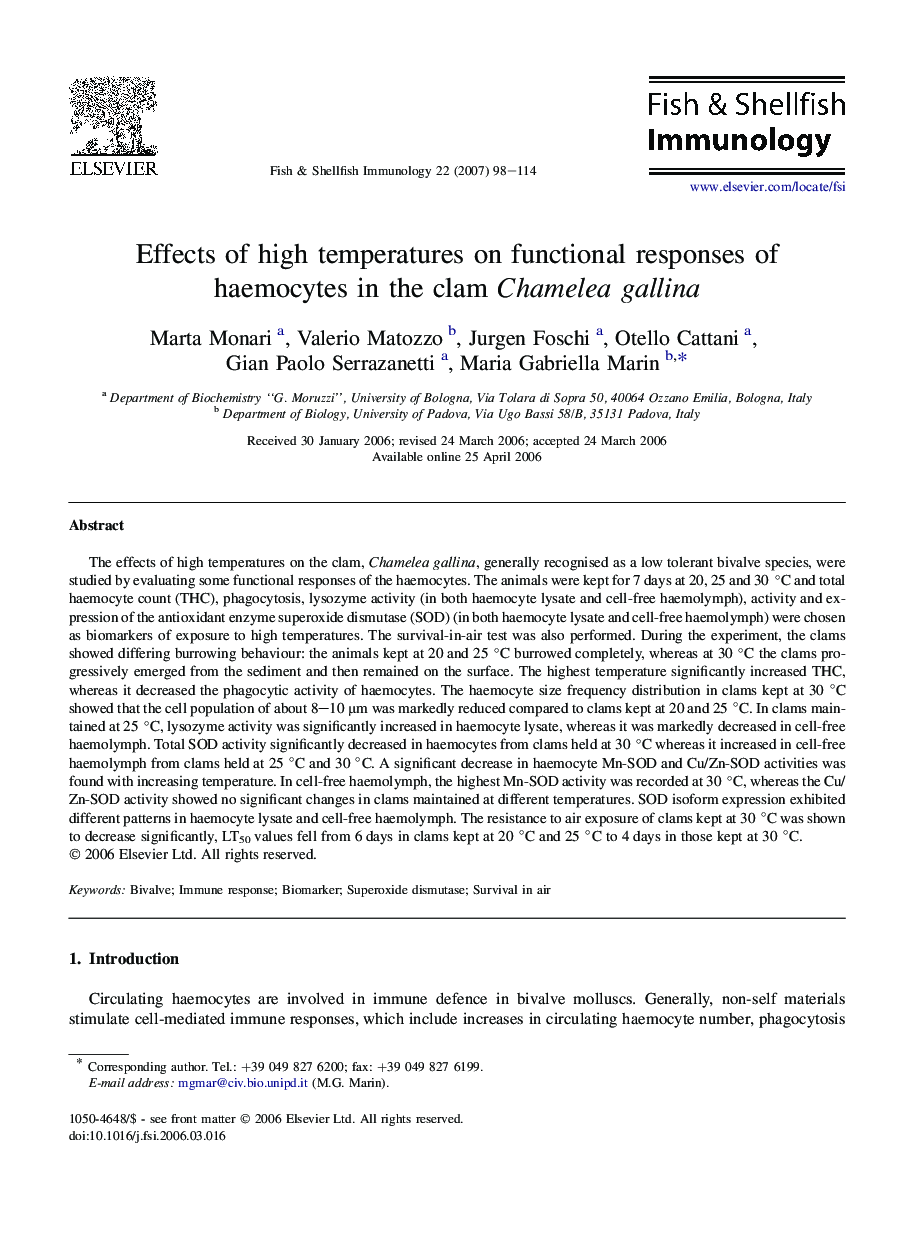| کد مقاله | کد نشریه | سال انتشار | مقاله انگلیسی | نسخه تمام متن |
|---|---|---|---|---|
| 2433763 | 1553632 | 2007 | 17 صفحه PDF | دانلود رایگان |

The effects of high temperatures on the clam, Chamelea gallina, generally recognised as a low tolerant bivalve species, were studied by evaluating some functional responses of the haemocytes. The animals were kept for 7 days at 20, 25 and 30 °C and total haemocyte count (THC), phagocytosis, lysozyme activity (in both haemocyte lysate and cell-free haemolymph), activity and expression of the antioxidant enzyme superoxide dismutase (SOD) (in both haemocyte lysate and cell-free haemolymph) were chosen as biomarkers of exposure to high temperatures. The survival-in-air test was also performed. During the experiment, the clams showed differing burrowing behaviour: the animals kept at 20 and 25 °C burrowed completely, whereas at 30 °C the clams progressively emerged from the sediment and then remained on the surface. The highest temperature significantly increased THC, whereas it decreased the phagocytic activity of haemocytes. The haemocyte size frequency distribution in clams kept at 30 °C showed that the cell population of about 8–10 μm was markedly reduced compared to clams kept at 20 and 25 °C. In clams maintained at 25 °C, lysozyme activity was significantly increased in haemocyte lysate, whereas it was markedly decreased in cell-free haemolymph. Total SOD activity significantly decreased in haemocytes from clams held at 30 °C whereas it increased in cell-free haemolymph from clams held at 25 °C and 30 °C. A significant decrease in haemocyte Mn-SOD and Cu/Zn-SOD activities was found with increasing temperature. In cell-free haemolymph, the highest Mn-SOD activity was recorded at 30 °C, whereas the Cu/Zn-SOD activity showed no significant changes in clams maintained at different temperatures. SOD isoform expression exhibited different patterns in haemocyte lysate and cell-free haemolymph. The resistance to air exposure of clams kept at 30 °C was shown to decrease significantly, LT50 values fell from 6 days in clams kept at 20 °C and 25 °C to 4 days in those kept at 30 °C.
Journal: Fish & Shellfish Immunology - Volume 22, Issues 1–2, January–February 2007, Pages 98–114